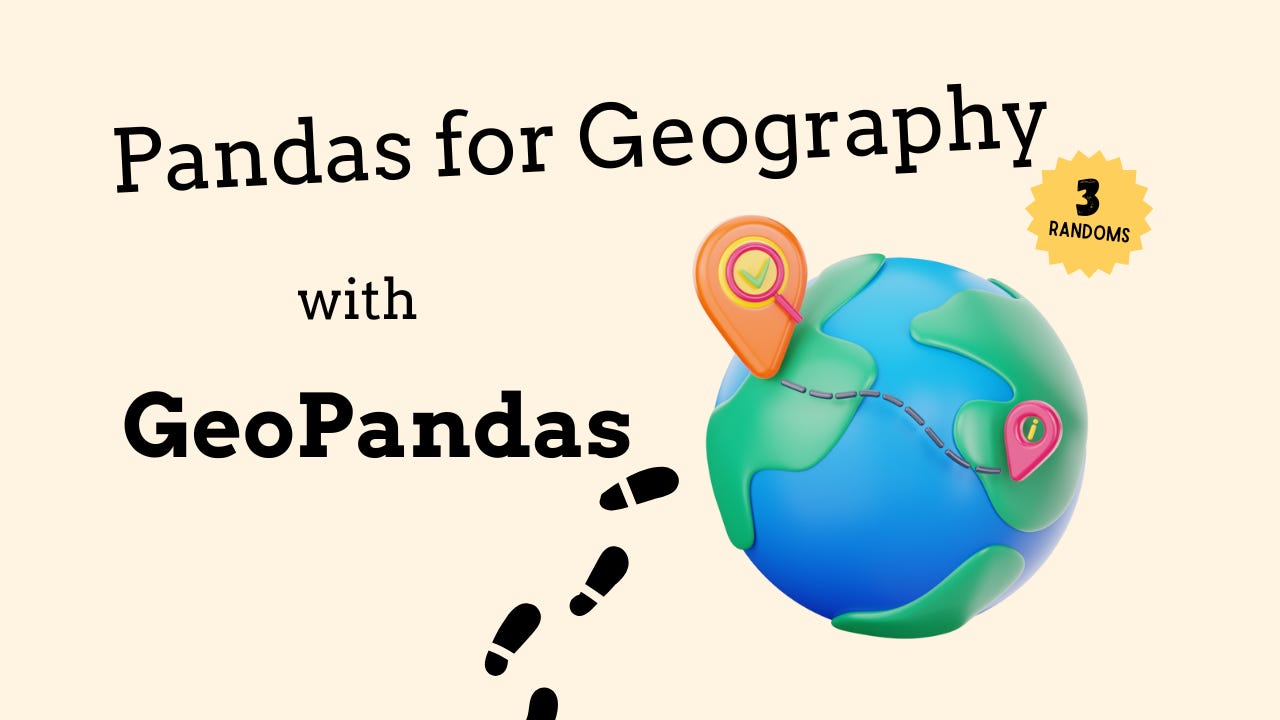GeoPandas for Beginners: Load Maps, Filter Regions, and Calculate Country Areas Fast
Learn how to use GeoPandas in Python to load shapefiles, plot maps, filter regions, and calculate country areas with easy, step-by-step geospatial data examples.
Working with location-based data can feel a bit overwhelming at first. Trying to map things out, measure distances between places, or figure out which areas overlap can get complicated pretty quickly.
But that’s exactly where Python gives us a serious advantage—with a tool called GeoPandas.
Now, if you’ve used pandas before, you’re already halfway there. GeoPandas is basically an upgraded version of pandas, but with built-in support for geographic shapes—like points, lines, and areas.
So instead of just working with rows and columns of data, you can now work with maps and real-world locations, all from inside your Python code.
Welcome to GeoPandas. Check out other 3 Random Articles here.
Imagine you're subscribed to a newsletter called 3 Randoms. Each week, it introduces you to three lesser-known Python tools that can make your coding better. It's like expanding your toolbox and discovering new tricks.
Why is that a big deal? Well, let’s say you have a dataset of cities or store locations. With GeoPandas, you can plot them on a map, calculate how far apart they are, or even see which ones fall inside certain regions—all without needing any fancy mapping software.
It’s like pandas suddenly learned how to read maps and got a whole lot more powerful.
In this article, I’ll walk you through how GeoPandas works. We’ll start by loading some basic geospatial data, plotting it on a map, and then I’ll show you a few key functions that I use all the time. If you’ve ever been curious about mixing data science with geography, this is a great place to begin.
Let’s go ahead and install GeoPandas so you can follow along:
pip3 install geopandas👉 Thank you for allowing me to continue to do work that I find meaningful. This is my full time job so I hope you will support my work.
My premium readers get access to so much more, like monthly Python projects, in-depth weekly articles, this here '3 Randoms' series, and my complete archive!
👉 If you get value from my work, please leave it a ❤️ and share it. This helps more people discover this newsletter, which helps me out immensely!
This is meant to showcase you the syntax and show you how this can speed up our code. For more in-depth studies I want you to leave some comments and I can create content around this for you!
Once you install it, we’ll dive into how to work with maps and real-world data—all from right inside your Python script. This should be a fun one. Let’s get started.




